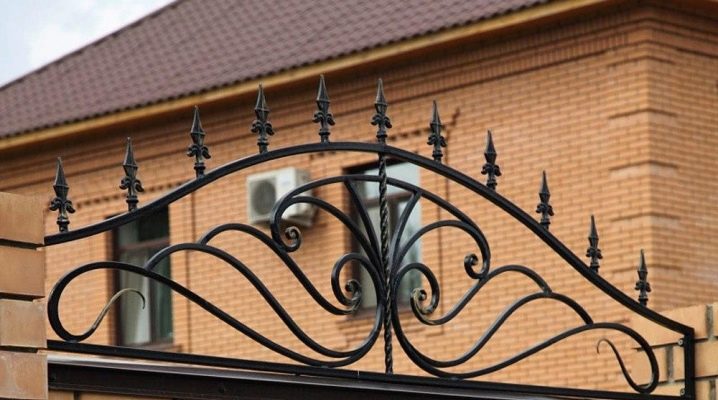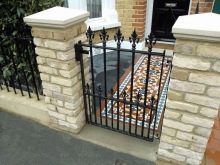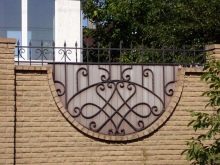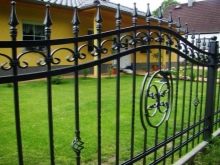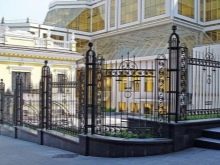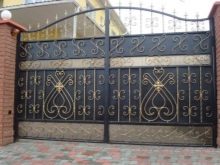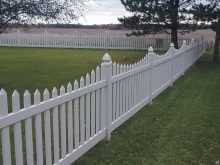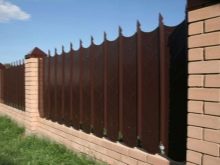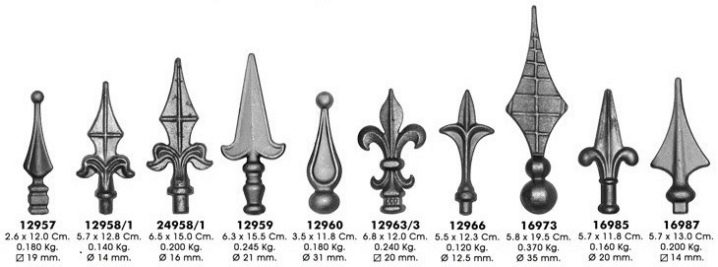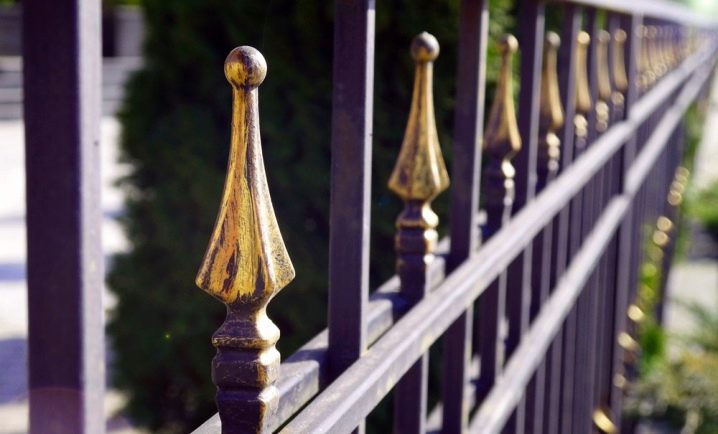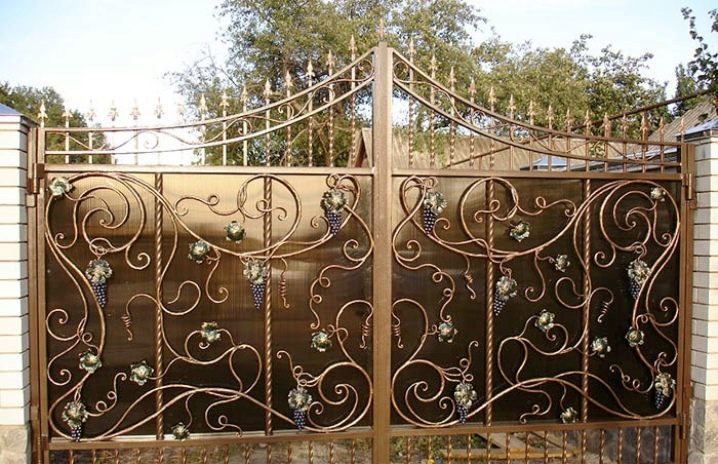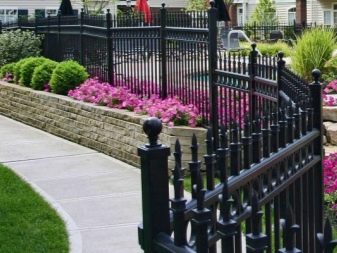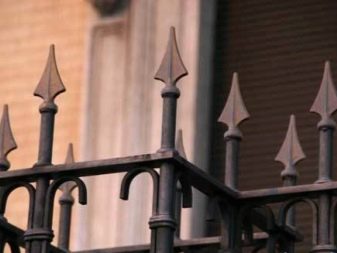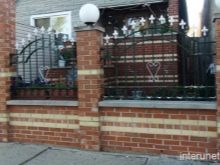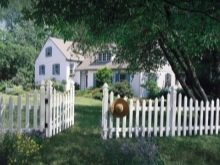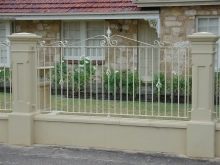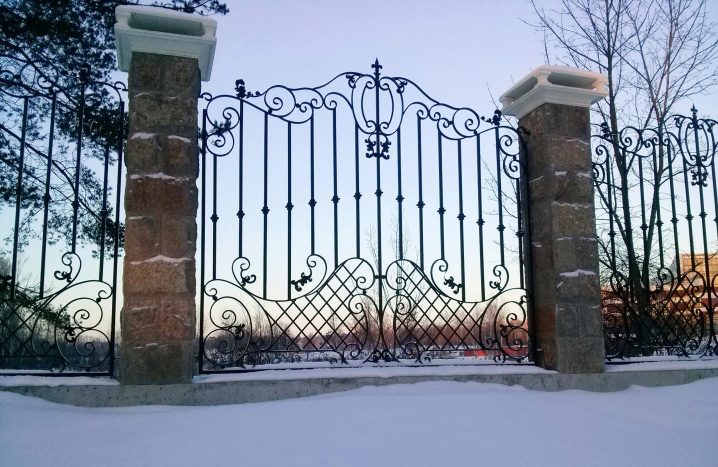Peaks for the fence: beautiful design options
Wrought fences are among the most reliable ways to protect garden plots, the territories of enterprises and business objects. They are distinguished by an attractive appearance and a very solid price. They are fenced off by parks, squares, private households from unwanted intrusions. These accessories serve as elements that complete the design of private property and other territories.
The multiplicity of manufacturing techniques, design options makes forged, as well as welded gate and fence designs a universal means for fencing the territory of any site. The decoration of such structures are peaks.
What is it?
Ideal in beauty and decoration, a wrought fence mounted on solid pillars will remain incomplete if its surface is not equipped with figured peaks.This frame has a history of more than one century, but today the demand for it remains high enough. Peak represents sharpened metal backwhose main purpose has always been an obstacle to undesirable penetration into the fenced territory.
Our ancestors equipped the surfaces of gates and fences with tips of spears and a peak for the sole purpose: not to allow the enemy to cross the fence. If they did not care about the aesthetic purpose of the peak, nowadays such tips for the upper intake or portal cut, in addition to the functional purpose, also have an aesthetic function.
Kinds
The pick-up peak is a pointed tip, made mostly of metal. A variety of such products can be called peaks from metal profiles, made by hand (when pointed tips are cut from its sheet). These tips are mounted on the top of the fence. There are also peaks of wood, carved on woodworking machines and designed for wooden fences.
Modern manufacturers offer to the attention of buyers plastic tops for the fence, which can be considered a universal type of intake accessories.
This material is dedicated specifically to forged and welded intake structures, so the tops for them should be considered in terms of their application to these types of fencing. For them, either wrought or cast iron, as well as steel lances are used.
Such products in most cases have the form of somewhat flattened metal petals, cones of four or trihedral cross section. There are also products that are close in shape to an isosceles triangle of elongated shape. The ends of the intake peaks may resemble arrowheads and copies, all of which may be flat, three-dimensional shapes. There are exclusive types of pommel, made in the form of small statuettes.
As a rule, low-carbon steel is used as raw material for the manufacture of cast and forged fence-gate tips. Molded accessories can be made of cast iron. This ferrous metal has been used as a raw material for steelmaking and a traditional material for casting metal jewelry that has been used for the manufacture of artistic fences with elegant patterns for centuries. It badly cooks with steel fence elements.
This problem can be solved by landing cast iron tops on the thread. To do this, they make an appropriate cavity in it, although often casting is performed together with the entire fence. The same applies to steel products, which, in addition to the threaded connection, are also easily welded to the steel fence.
If you have the desire and relevant technical skills, you can make inlet tips in the form of a peak with your own hands. At the same time, it is necessary to use not casting or forging (this is practically impossible at home), but welding and cutting of metal. The material will be made of steel round or square rod, angle, hexagon, fittings and I-beam.
Such products, not being quite aesthetic, quite sharp at the ends and copes with the protective function. For durability, reliability and durability, they are not inferior to more elegant cast and forged counterparts.
Criterias of choice
Initially, the historical function of pointed intakes was the protection of the territory from unwanted intruders of robbers. The perimeter of the fence was always equipped with sharp elements for this very purpose.Aesthetic appeal and artistic refinement of the fence faded into the background. Nowadays, the main meaning remains for the decorative purpose of such tips. To combine these two functions, you can use steel tops made by the method of artistic forging.
For decorative purposes, it is better to use cast peaks, which, unlike forged varieties, have a more blunt top.
There are combined types of fences, combining established through one pointed and decorative peaks. Another criterion for selection of intake or gate tips is the problem of the relevance of any of their varieties in relation to a specific type of construction of the fence. This particularly applies to the use of cast peaks on beautifully forged fences, because for a patterned forged fence such pommel may become “alien” elements.
It is important to comply with the measure, trying to achieve originality of the fence. Peaks must be combined with the existing fence.
Installation and maintenance features
When installing the peak on the upper cut of the fence, it is important to take into account the nuance: they must reproduce the shape of the cut itself (for example, arched, wavy, flat or angular).In order to visually change the geometry of the fencing pattern, they can be folded into shapes, changing by heating and bending the inclination of the ends of the rod, on which the peak tips are attached.
In some cases, such elements are installed not only on the upper part of the fence, but also include them in the composition of the pattern in its middle part, or equip them with the lower cut of the fence. They must be installed vertically, even if the spikes are down. Allowed in this case is the installation of the most through one bar of the fence, as well as on each of its rod (subject to a distance from the pillars).
As for the technology of fastening steel to the fence, forged peaks are attached to the fence by electric welding. The only parameter that in this case should be taken into account is the cross section of such a top, which can be either round or square. Therefore, they should be fastened to the intake elements of the corresponding profile.
Cast peaks differ from forged counterparts by the presence of a cavity in the form of a seating nest. When assembling this cavity is placed on the top of the intake profile or rod.This requires adherence to the principle of fastening a round profile to a round bar, and a square one to a square bar.
As for the care of forged or cast fence peaks, for its implementation it is sufficient to periodically paint these elements in order to protect them from corrosion (except for iron products). This will update the design of the fence, giving it a fresh and beautiful appearance.
Coloring can be done in the tone of the fence, or highlighting the peaks in a contrasting color.
How to make intake tips in the form of a peak with your own hands, see the following video.
